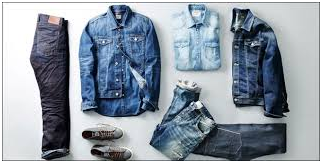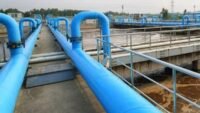A garment washing is the important technological part which is appearance, comfortable & creates fashion on garments in the market. In garments sector washing can be done by different types of wash into garments. It is very complexity & dynamic process. A cloth looks very flexible, comfortable & fashion done by washing process. Now days we can cannot imagine garments without washing process. We can apply multiple wash hinging process into garments. So, I will show important technological diversity washing process into garments.
Basically, in garments sector there are two types of washing process.
- Dry or Mechanical process.
- Wet or chemical process.
Now days, customers want & looking something special effect on garments. As per fashion trend analysis garments expert find out different types of washing apply on garments. So, I will expedite the different types of dry proceed apply on garments. Before dry process I will show how to apply a garments washing process done by washing plant. A garments where apply washing process is called washing plant or washing department.
Dry or Mechanical Process:
Sandblasting:
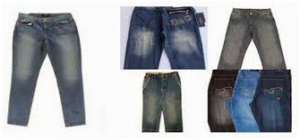
Sandblasting is the popular dry process of garments washing. This process is one kind of mechanical process. This process can be done by hand, machine & use different types of sand. Basically, this sandblasting uses in different types of heavy woven fabric like as denim, Twill, canvas, corduroy. Sandblasting applies to heavy woven fabric because it is needed to absorb & become live it own strength. The action of aluminum oxide likes as sand. It is uses in surface of fabric. Sandblasting forcing solid particles across at high speed by hard surface. Generally, it occurs in compressed air.
Basically, Sandblasting using in specific area where needed to fade. This process refers to creates color change on specific area. It is the chemical & water free process. Sandblasting is performed a lucrative view after process into wear cloth. When complete the sandblasting the need to process chemical like as normal wash, enzyme or other process. Then it would be a great appearance into garments. There are different health hazard uses in different type of sand.
Type of sand in sandblasting:
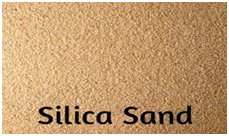
- White Silica Sand.
- Glass beads.
- Aluminum Oxide.
- Silicon carbide.
- Crushed walnuts seed.
Types of Sandblasting:
Normally, there are different methods apply in garments.
- Hand sanding or Hand brushing.
- Machine Sanding.
- Sand Blasting.
Hand Sanding:
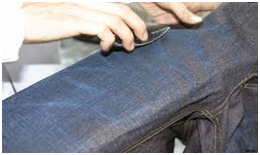
In this method, dry process operator uses sandpaper to come out abrasion on fabric specific surface area.
Machine Sanding:
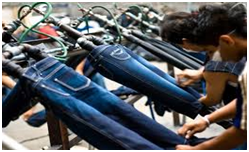
In this method, a series of cylinder rolls arrangement horizontally & wet process operates use warped paper or chemical coated at specific fabric surface area.
Sandblasting:
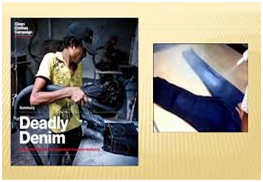
Sandblasting in the one kind of blasting method, sandblasting material use in granular, powder or through a nozzle at high speed & pressure in specific surface area on garments.
Grinding & Destroy:
Now days, grinding is the popular dry process method in garments industry. According to current fashion trend customers choice grinding or abrasion in surface of wear cloth. Normally, grinding is implementing into heavy jeans & will pants. Grinding is done by dry process department. It is looks like torn on edge or middle or side of pants. When torn is more on surface area into pant is called destroy. Grinding is done by pen or stone tools. It becomes a special view after completed the washing process. Young means & women are like this type of fashion in current market. Garments are treated with a rough surface. Normally, in this way, fabric is damage intentionally.
Grinding & Destroy
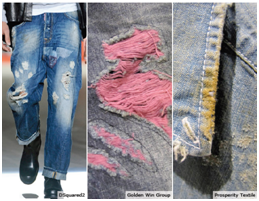
Tagging
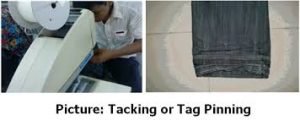
Tagging is the popular & important dry process in garments industry. Main purpose of tacking is creates color loss or faded on specific area on garments. Customers always want & looking a special effect & new fashion on wear cloth. Now a day, in garments industry it is the normal dry process for washing department. Tacking is being used by swift tag machine with associate of plastic or nylon pins on rigid garments form. Normally, there is different placed use in tag pins.
Use placed on body garments.
- Waist band.
- Bottom of Hems.
- Front & back pocket.
- Knee
- Side pocket corner.
On the other points, after complete the wash we must remove from tag pin from washing body in finishing department. Special View effect on garments in the specific area. It must be creates faded or color loss on specific area on garments.
- Top part tacking view on faded or color loss.
- Other bottom part view on dark part.
Hand Scraping:
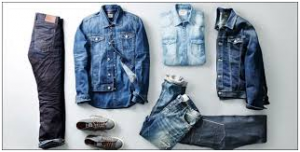
Hand scraping is the popular dry or water free process method in garments sector. Normally, hand scraping use in rigid form of garments. It is done by dry process department. Hand scraping creates on pressure in specific area on garments by papers. As per customers instructions design & layout apply in specific area on garments body. Scraping use by emery paper on specific location. Normally, different placement uses scraping on garments. Hand scraping creates a vintage & distress look on garments. It can be vertical & horizontal operations on garments body.
- Front & Back High.
- Seat position.
- Front & back lower part of body.
PP Spray:
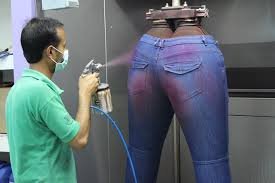
PP means “Potassium per Manganate”. Generally, it is the popular method use in garments industry. PP is the neutralization process in washing Department. It is the complicate method & need to operate skill people by washing pant. PP spray main purpose is the brighter than back side indigo color shade. PP spray is the sporting process which is creates the brighter on the sandblasting placement. In washing department skill operator spray PP with the help of spray gun. Garments hang on machine & Potassium per Manganate looks like pink on garments & clean the dirty on specific blast area. It is view on special effect on particular sand blast area after the finish the garments wash. Sodium Meta Bisulphate is the most common used in neutralization process.
Whisker:
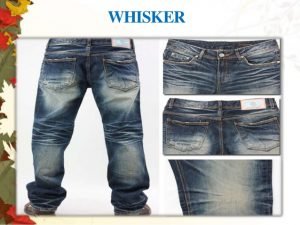
Whisker is one of the popular methods in garments industry. There are many whisker implement expression on garments. It is the engrave on design done by papers on garments. Whisker can worn out lines & expression generate on wearing on high & hips on garments. It is dry process & water free operation in washing plant. Basically, this is most use in denim. Skill operators must mark placement & design on garments. Operators execute the layout as per design on garments.
It can be done manually with the help of emery papers on fine wood stick or pasted plastic materials. Different types of methods design expression on jeans like as rubber, ballons design are available. It is need to operate by skill people otherwise it can be damage fabric during rubbing. Basically, this method is high quality & cost effectiveness.
Placement effect in whisker:
- Front High.
- Hips
- Knee Area.
Types of whisker:
- Manual Whisker:
This whisker is competed by manually with the help of pattern. Basically, we implement abrasion papers & absorb color homogeneously on denim garments.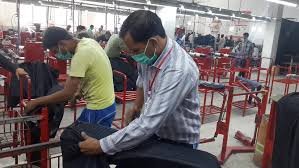
Laser Whisker:
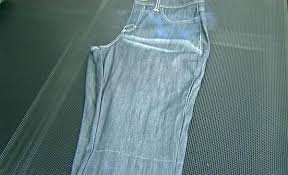
Laser Whisker is the done by laser machine. Laser machine is the very costly & need to operators by skill people. Design made by Photoshop & load into laser machine. Laser intensity is fixed on specific area by laser machine & indigo is burned. After complete the wash the burned indigo is removed & whisker is visible on garments. Now a days,3D whisker is the most popular on Jeans.
Wrinkle:
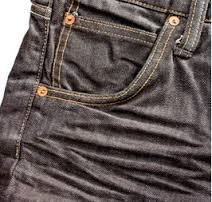
Wrinkle is the popular method in the garments Industry. Day by day it is going more complex & dynamic washing application in this sector. Wrinkle is one of the most important washing applications on garments. Customers always search a vintage look on garments. A wrinkle proceed on crease, fold & ridge method applies on garments. It is the one kind of pressure & finishing operation in the fabric. Wrinkle resistance depends on low & high on the nature of fabric. A wrinkle resistance on cloth view special appearance. The fabric produces strains & lay up potential energy that can be apparent as wrinkle revival under appropriate conditions.Basically, wrinkle process apply different types of fabric in the following.
- Denim.
- Twill.
- Poplin.
- Nylon.
- Polyester.
- Viscose.
- Corduroy.
- Canvas.
- Knit.
Types of Wrinkle:
- Permanent Wrinkle.
- Overall Wrinkle.
Permanent Wrinkle:

- Normally, permanent wrinkle is done after complete all kinds of dry & wet process.
- Resign is applied in the particular fabric area on garments for permanent wrinkle.
- For permanent wrinkle normally need 20% resign & 80% water.
- Temperature 140°c to 160°c, Time 20-40 minutes.
Overall Wrinkle:
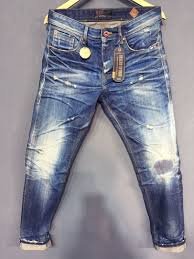
- Normally, Overall wrinkle is done after complete all kinds of dry & wet process.
- The whole garments attached in tight position by thread.
- Resign apply in washing machine & 5 to 10 minutes at 50°c temperature
- Again temperature 140°c to 160°c, Time 50-70 minutes in washing Machine.
- 10 minutes for cold in Dryer.
Wet process or Chemical Process:
Enzyme wash:
Enzyme is a substance produce by living organism that treat as catalyst to bring about a specific a biochemical reaction. We can say that it is the macromolecular biological catalyst. All chemical reactions occurring in living organism on the catalytic action of enzymes & it can occur biotransformation. Around 4000 types of enzymes are popular.
Enzyme function in an easy environment similar to the body environment of a living organism and they supported life by creating energy.
Types of enzyme:

- Oxidoreductase.
- Transferase.
- Hydrolase.
- Ligase.
- Isomerase.
- Lyase.
In garments, enzyme wash is the very interesting & popular process in Bangladesh likes all over the world. Enzyme wash is the bio-catalyst & living biochemical substance process using in garments which can produce soft & smooth to wear a garments. The garments washed by using enzymes & break the surface cellulose fiber of the fabric during washing. The hydrolytic produce of enzyme can creates the loss of surface fabric & gets better smoothness & softness of the fabric.
n Bangladesh there are two kinds of enzyme used in garments.
- Acid Enzyme. (4.5 to 5.5)
- Neutral Enzyme(6 to 7.5)
Advantage of Using Enzyme:
- Save of Energy: Friendly envirmentent conditions. Low & moderate PH.
- Cost Saving: Reduction different types of chemical used.
- Save of time: Power full action & less time.
- Eco friendly: Fully bio degradable.
Stone Wash:
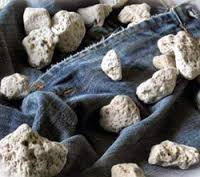
Stone wash is the effective washing method in garments industry. It create special effect, abraded, regular or irregular, vintage looks, smoother feel & even more unique appearance where touch in stone during washing on garments. Stone wash represent the aesthetic finish given to denim fabric according to improve appearance & make a strong performance. Different types of denim stone washing methods use in the following.
- Pumic Stone.
- Neutral.
- Acid Cellulose.
It create original, worn-out appearance for the best usable. As a result, stone wash make lighten & soften after cloth wash. The fabric spun together with pumice stone in large industrial machines. Pumice stone can be different shape, composition, hardness & prosperity. Pumice stone widely use in garments sector. By applying of pumice stone, the surface of fabric is faded & abraded in particular area. Stone-washing also helps to increase the softness and flexibility of the rigid fabric. The process uses stones to roughly up & down the fabric is being processed. According to wash cylinder rotates, the garments are repeatedly pounded and beaten as the tumbling stones ride up the paddles inside the drum and up & down into the fabric.
Advantage of Stone wash:
- It becomes smooth of fabric.
- It becomes softer.
- It looks faded & vintage looks.
- Environmental friendly.
Disadvantage of Stone Washing:
- Strength decrease of the fabric.
- Environmental dispositions of waste.
- High labor cost to borne pumice stone.
- Need several time of wash.
- Expensive Laundry machine.
- Quality of abrasion control is difficult.
- Water population for stone dust & treated as waste water.
Md.Mahbub-Ul Islam
RMG Consultant & Researcher
mahbub.islam54@gmail.com

